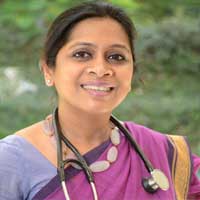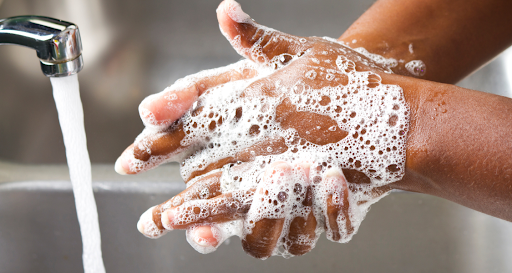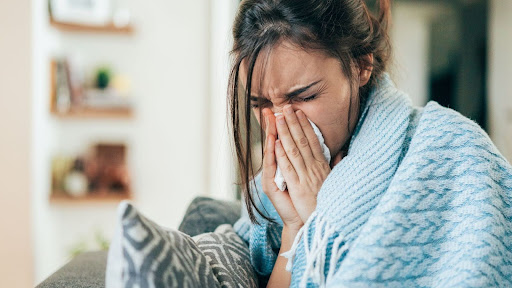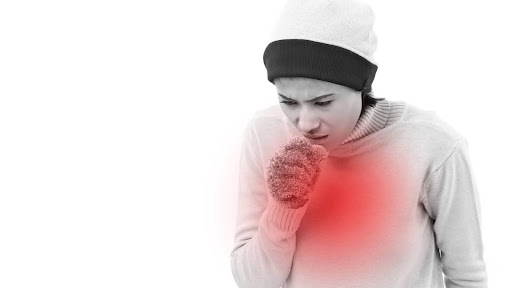Monitor Blood Pressure and Get Treatment from Home Easily
6 min read
By DocGenie , Published on - 26 February 2021Hypertension, the medical term for high blood pressure (BP), is a condition in which the force of the blood against the artery walls becomes very high. Typically high blood pressure is defined as blood pressure above 140/90, and if the pressure goes above 180/120, it is considered to be severe.
Available reports suggest that cardiovascular diseases remain the top cause of global mortality, with an estimated 17.9 million attributed deaths in 2016 (31% of global deaths). High blood pressure is mostly related to the development of ischemic heart disease, heart failure, stroke, and chronic kidney disease. Also nearly 57% and 24% of stroke and coronary artery disease-related deaths happen due to high blood pressure respectively.
The situation is no better in India. According to a national level survey conducted with fixed one-day blood pressure measurement camps across 24 states and union territories, it was found that there is a high prevalence of hypertension, with almost one in every three Indian adults affected.
For people with hypertension, checking blood pressure during their visits to doctor's clinics is not enough. Most healthcare organizations now recommend that people with hypertension should monitor their readings more regularly at home. Moreover, eating healthy food with less salt, working out regularly and taking medicines on time can go a long way in keeping your BP in check.
It is pertinent to note that hypertension often does not show any symptoms and is hence known as a silent killer. It often goes undetected for years until one develops organ damage, or gets a heart attack or stroke, or succumbs to cardiovascular death.
The good news is even though hypertension is not generally curable; you can keep it in check to where it causes less harm. Treating and monitoring high BP can prevent health problems and let you live a longer, healthier life.
Firstly, you should be aware of your blood pressure. The smartest way to stay on top of it is through home monitoring. This is because blood pressure fluctuates through the day – even minute by minute. Checking your BP only once or twice a year is not enough if you have a family history and should be supplemented with home BP monitoring.
Here are some advantages of home blood pressure monitors -
- Easy to use and fairly accurate (you should cross check the readings with a “manual checking” at the doctor’s office)
- Successfully manages high BP by letting you be in control and make changes to your lifestyle
- Helps avoiding "white-coat syndrome," the nervous rush in blood pressure during a doctor's visit.
- Helps guide treatment by letting you know if the medicines are working or you need to see your doctor
- Makes it easier for your doctor to monitor your condition and suggest medications when they review your home BP log
Keeping BP log at home also helps your doctor follow trends in blood pressure rather than rely on an isolated reading. Remember to take your home readings to the clinic. Doctors also prefer that you take along your home BP monitor. It gives some feedback about how you're doing. They can also confirm its accuracy against their clinic machine. It also helps doctors review the BP log with those measured in the clinic, which provides them with better information on which to make treatment recommendations. Published reports and surveys also confirm that those who monitor their BP at home are more likely to reach their blood pressure goals than those monitored solely by doctors.
Here are some effective ways of home blood pressure monitoring -
Buy a blood pressure monitor
An array of BP monitors are available nowadays both at medical stores and online. The cost generally varies between 1500 and 2000 INR. There are two types of BP monitors. Automatic monitors are easier to use, as they don't need stethoscopes as the cuffs inflate by themselves. Manual ones need someone trained to measure BP - usually a nurse or doctor.
When buying a blood pressure monitor, keep in mind the following -
- It must go around your upper arm as doctors don't recommend wrist or finger monitors.
- Ensure the cuff fits your arm, that is it is not too large or too small, as then the reading won't be accurate.
- Ensure that you can read the numbers on the dial or display.
Know about the added features of the monitor. There are monitors that make an average of the last few readings, record the measurements over time, and share them with your doctor through your smartphone.
Determine when to take your blood pressure
Most doctors recommend taking a couple of readings in the morning and repeat that again at night. There is no need to go overboard and take readings constantly. That way you will get over anxious and blood pressure will go up just from your anxiety.
How to take blood pressure readings at home
- Do not drink coffee or alcohol, or take tobacco 30 minutes before taking the reading.
- Place your feet flat on the floor, rest your back against the chair, and place your arm on top of a table or any other flat surface.
- Be in that position for five minutes, and then wrap the cuff snugly around the upper part of your bare arm. Take note that the center of the cuff sits over your artery. If you are using a manual monitor, you'll have to squeeze the bulb to inflate and then deflate the cuff slowly. On the other hand automatic monitors will inflate automatically when you press a button.
- Now see the readings on the dial. The top number is your systolic pressure—the blood pressure when your heart beats. The bottom number is your diastolic pressure—the pressure in between beats. Note down the readings each time you measure in order to track it over time.
What do the readings say?
- Less than -120 systolic and 80 diastolic – normal BP
- 120–139 systolic or 80–89 diastolic – prehypertension
- 140 and higher systolic or 90 and higher diastolic - hypertension
If you find that the BP is high or fluctuating considerably, seek medical advice to find out if you need to change the treatment plan.
Lifestyle changes to lower blood pressure
Monitoring blood pressure comprises drug therapy and lifestyle changes. Doctors say that the latter is equally important, if not more, than drugs.
Here are some tips -
- Follow a diet high in whole grains, fat-free and low-fat dairy products, fruits, vegetables, poultry and fish
- Be careful to ensure that the food you take is low in saturated and trans fats, added sugar, and salt
- Doctors recommend less than 2,000 mg of sodium daily for people with high blood pressure
- Work out for minimum two-and-one-half hours every week. Your exercising regime can include aerobic activity, muscle strengthening and stretching
- Be careful about your weight. Try to maintain a healthy weight according to your height
- Stay away from tobacco products and limit alcohol intake
- Manage stress level with relaxation techniques like meditation, music and yoga
DocGenie is an online telemedicine platform that provides you with quality healthcare from the comfort of your own space. On DocGenie, you will find a select few, highly-qualified doctors, unlike other online platforms with thousands of doctors. So you can be assured of receiving excellent, honest, personalized care from the best doctors.
Author Details

Dr.Rachna Kucheria
MD (Community Medicine) AIIMS New Delhi
MD (Family Medicine) USC California
Obesity Medicine Certification The American Board of Obesity Medicine
30+ Years of experience


